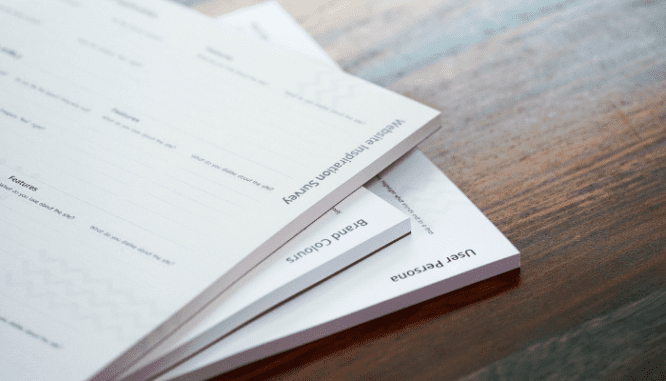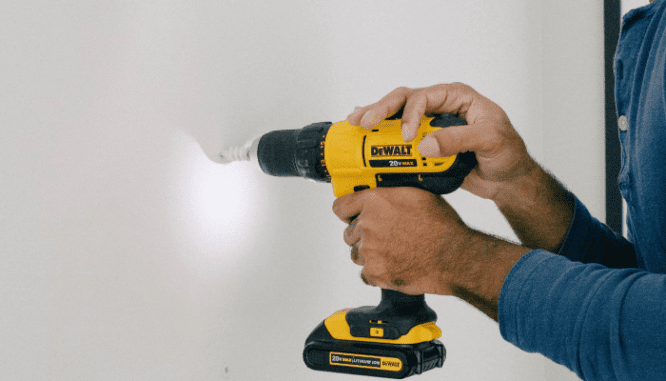The Steps to Closing On a House (And What to Do to Speed Things Up)
- Published on
- 14 min
-
 Leslie Osmond, Contributing AuthorClose
Leslie Osmond, Contributing AuthorClose Leslie Osmond Contributing Author
Leslie Osmond Contributing AuthorLeslie is a licensed Realtor in Missouri and freelance writer that’s developed content for several online and offline mediums. While her writing specializes in financial concepts, she loves trending topics, technology, travel, and pop culture and incorporates these subjects into her pieces. Launching her career as a ghostwriter, Leslie has contributed content for articles in US News & World Report, TheStreet, Kiplinger, Fox Business, and is a Finance Writer for Seeking Alpha.
-
 Amber Taufen, Former Managing Editor, Buyer Resource CenterClose
Amber Taufen, Former Managing Editor, Buyer Resource CenterClose Amber Taufen Former Managing Editor, Buyer Resource Center
Amber Taufen Former Managing Editor, Buyer Resource CenterAmber was one of HomeLight’s Buyer Center editors and has been a real estate content expert since 2014. The former editor-in-chief at Inman, she was named a “Trendsetter” in the 2017 Swanepoel Power 200 list, which acknowledges “innovators, dealmakers, and movers-and-shakers who made a noteworthy impact over the last year” in real estate, and her assessment of revenue and expenses at the National Association of Realtors won a NAREE Gold Award for “Best Economic Analysis” in 2017.
Finding the perfect home — especially in the 2022 market — is a wonder. You’re anxious, and the final steps of closing can be nerve-racking as you await the keys to the property. We know how worried you are, which is why we’ve put together these key steps to closing on a house, to help orient you and put your mind at ease.
After you’ve been preapproved for a mortgage, found the home of your dreams, made an offer, and negotiated a final sales price, it might seem like you’ve reached the finish line (and there’s definitely some cause to celebrate — cautiously). But you still need to reach the closing table before the house is officially yours. We’ve outlined these common steps to closing on a house (including what happens behind the scenes) so you can keep track of where you are, what still needs to be done, and how close your dream of homeownership is to becoming reality.

How long is the closing process?
The average time to close on a mortgaged home is between 30 and 45 days, depending on the type of loan and the housing market in the area. In addition, the loan process can be overwhelming. An all-cash buyer can close in four to ten business days.
It’s critical to familiarize yourself with the essential steps to closing on a house. There are many things to keep track of before the transaction is finalized and your homeownership journey begins.
Step 1: Signing the purchase agreement
You have agreed upon the sales price and any contingencies with the seller, and you are both ready to move forward in the real estate transaction. Signing the purchase agreement effectively places both the seller and buyer under contract for the property of interest and kicks off the closing process.
Step 2: Choose a title company or real estate attorney
The title review is critical in ensuring the seller has a legal right to sell the house and that there are no other claims on the property; the title company or real estate lawyer will also handle any earnest money and oversee the closing itself. You should have plenty of options when selecting a title company or lawyer, so it’s important to ask questions to make sure that you’re comfortable.
Get referrals from people you know and trust. Compare prices and clarify who is responsible for the title service fees (depending on your state, the seller may cover certain title fees).
Step 3. Open an escrow account
Escrow accounts are held by a neutral third party to facilitate the transaction between the buyer and seller. This neutral party keeps any funds associated with buying the house until the transaction is complete. Your title company or lawyer will often handle this part for you, but be sure to check that setting up escrow is part of their services first.
Step 4: Title review begins
Title review begins early; a title company or lawyer will comb through public records and documents to verify any claims or liens against a home (for example, distant relatives claiming rights to the property, or a lien on the house for unpaid taxes or even HOA dues) so that when the buyer “takes title,” they can establish ownership legally.
We spoke to Chad Dean J.D., Florida Attorney and Partner of the Dean Law Group, specializing in business and real estate litigation, who says, “Titling is stressful. Most times, when buyers get to the closing table, some want to know and go over what every document says, and others simply want to sign.”
Dean also emphasized that a significant advantage that most people don’t know about is the homestead exemption. We will discuss these exemptions later in the piece.
Step 5: Deposit your earnest money
As part of the purchase process, a deposit known as earnest money is typically required.
Earnest money assures the seller that the buyer is serious about their offer. If the buyer chooses to back out of the purchase for a reason unsupported by the purchase agreement, they could forfeit their earnest money.
Earnest money is deposited with a neutral third party known as escrow or an escrow agent. (This is why you opened an escrow account!) The funds are typically wire transferred or deposited via cashier’s check.

Step 6: Submit your loan application
You probably got preapproved for a mortgage, but now that you have an accepted offer, it’s time to take all of that information you provided to the lender and apply for the mortgage loan you’ll need to buy the house.
Now your lender begins its due diligence on you and your soon-to-be property. Some of the items requested by your lender will include:
- Your full name
- Your Social Security number
- Proof of your income and assets
- The address of the home to be purchased
- The loan amount you are requesting
Step 7: Review your Loan Estimate
Ideally, you’ve gotten pre-approved for a loan by several different lenders; when you submit your loan applications, then these lenders will provide you with a Loan Estimate form that will aid you in comparing your loan options.
This document includes the details of your loan, including the down payment amount you’re providing, the total loan amount, the mortgage rate (although this likely hasn’t been locked in yet), estimates of your closing costs, and other financial information that will help you make a decision as to which loan is best for you.
Step 8: Decide which mortgage you’re getting and finalize your application
There are several different types of mortgage loans, and not all mortgages are created equal. Some have stricter guidelines, and others require a heftier down payment, while some have a minimum down payment and may be compatible with down payment assistance.
Whatever you decide, it’s essential to consider all options and the annual percentage rate (APR) you’ll be paying. The APR encompasses the total cost of borrowing the money you need, including the mortgage interest rate, points, and other loan fees and charges.
Step 9: Decide whether and when to lock in your rate
Interest rates can fluctuate and are subject to change, so it’s essential to consider the best time to lock in your rate.
When possible, lock in your interest rate in advance to avoid market fluctuations that may cause you to pay more. A rate hike of as little as 0.25% can result in a significant monthly mortgage payment increase. You can also often request a “float down” from your lender, which will allow you to snag a lower interest rate if rates happen to fall instead of rise while you’re waiting for closing.
Step 10: Get an inspection
Home inspections are vital to ensure that everything is operating and in good order. Depending on the age of the home and its condition, you may decline an inspection (though doing so is not typically recommended by experts).
Sam Mansour, a Seattle agent who works with 68% more single-family homes than the average agent in his area, says about early 2022, “We’ve never seen this few homes for sale.” As a result, some buyers are waiving contingencies (such as the home inspection) to make their offer more competitive — but most agents would still recommend getting an inspection, even if only for informational purposes.
You must typically complete the inspection between 10 and 15 days from the offer submission, also known as the inspection period. Not completing the inspection in a timely manner runs the risk of waiving your right back out of the deal (with an inspection contingency) or request for repairs.
Step 11: Order any additional inspections
If the home inspector finds something that needs further review — plumbing, mold, termite damage, or other defects — and the seller refuses to repair it or is listing the home as-is, it becomes the buyer’s problem after they close and move in.
It’s wise to follow up with supplemental inspections if your home inspector found evidence of a problem that’s beyond the scope of a standard inspection. Talk to your agent and inspector about any additional inspection suggestions.
Step 12: Negotiate any repairs
Following an inspection, if there are any inspection contingencies in the contract, the buyer has the option to negotiate repairs or to walk away from the deal if the repairs appear to be more than the buyer is willing to risk. If the inspection was for informational purposes only, then the buyer will assume full responsibility for any issues uncovered after they take ownership of the home.

Step 13: Keep tabs on the appraisal
Because mortgage companies are taking on some risk in lending money to a buyer, they need to ensure that they’re not lending more than the home is worth. That’s why lenders require a home appraisal, to confirm the home’s value so they can recoup at least part of their investment should the buyer stop making payments on the mortgage loan.
Your lender will therefore order an appraisal, which generally takes one to two weeks to return.
Step 14: Negotiate any appraisal gaps, if necessary
If the home appraisal comes back for less than the contract price, buyers (at least those using appraisal contingencies) have a few options:
- Buyers can back out of the contract without forfeiting their earnest money.
- Buyers can renegotiate the price with the sellers, requesting a lower amount closer to the appraised value.
- Buyers can cover the price difference, also known as the appraisal gap, out of pocket.
- Buyers can request a second appraisal from a different appraisal company in hopes that the first appraisal was inaccurate.
Step 15: Find homeowners insurance
Lenders require you to secure homeowners insurance when obtaining a loan to purchase a home. It’s a condition of your mortgage to ensure that the house is insured in the event of any losses or damage incurred to the property due to covered catastrophes like fire, burglary, storms, and so on.
Check with multiple insurers to find the best coverage for you. It pays to shop around for the best deals. An insurance agent can help with this, as well as help you understand whether any specialty policies might be useful for supplementing your coverage.
Step 16: Check on title review and title insurance
Once the title review is complete, it should establish that the seller has a legal right to sell the property, and no one else can claim it. If there are any title issues, they’ll have to be cleared before the deal can move forward.
It’s still crucial to consider securing owner’s title insurance to protect yourself from future claims. Typically buyers are also required to purchase a title policy for their lender.
Title insurance protects the buyer or holder from financial loss if there are any unknown liens and encumbrances that were not uncovered during the title review step.
Step 17: Review closing documents
The Closing Disclosure is your last opportunity to review your mortgage terms. It outlines your monthly payment, interest rate, taxes and insurance, closing costs, and more.
Compare your Closing Disclosure to the initial Loan Estimate to spot any discrepancies. If you notice any discrepancies, talk with your lender immediately to get them rectified or clarified.

Step 18: Schedule transfer of utilities
When acquiring a home, buyers should contact their new utility companies to transfer their utilities. The period before closing or reviewing closing documents is an excellent time to schedule utilities to be put in your name to avoid any lapse in coverage. Your agent can usually get you any important utility account information from the seller.
Step 19: Get the money together for closing
You deposited your earnest money after signing the purchase agreement, and now it’s time to complete the purchase. The earnest money is typically applied to the down payment of the house, and the additional funds for the purchase will go into escrow.
Buyers will need to collect and secure the rest of their down payment (not including earnest money) and any closing costs, usually paid in the form of a cashier’s check or wire transfer, from their banking institution.
Be cautious of wire fraud! Wire fraud has become increasingly problematic and is one of the biggest issues involving the closing process. “Buyer’s cash to close is the biggest target, and it’s easy for people to get duped by fraudsters, sending the money where it shouldn’t go. Inquire before you wire,” says Dean, whose goal during the closing process is to try and educate buyers at the onset of the closing process by providing secure literature to ensure wire fraud does not happen.
Another option available to buyers is to hand-deliver cashier’s checks at the time of closing. Understanding that this can’t always happen and electronic means are more convenient in most instances, make sure your real estate agent or lender has provided you with the escrow agent’s phone number. The escrow agent should then send you the wiring instructions.
As an extra precaution, call the escrow agent and speak to the person to confirm the instructions verbally and ensure all account information matches. Being overly cautious can be the difference between closing on a home or not.
Step 20: Final walkthrough
Within 24 hours of closing, a final walk-through or inspection of the property is essential. A buyer wants to ensure that the previous owner has vacated (unless otherwise agreed upon — for example, a rent-back arrangement) and that the home is in the same condition as when first viewed.
If the walkthrough reveals any problems the seller agreed to fix, those repairs should be re-requested before closing.
Step 21: What do I bring to closing?
There may be unavoidable delays throughout the homebuying process, but you can ensure that you do your part by preparing for closing ahead of time.
There’s nothing worse than forgetting something necessary for the closing. Typically, all paperwork is furnished to you at closing, but it never hurts to come prepared. The title company, an attorney, or a settlement agent should be with you to guide you through the process. Be sure to obtain a list or ask well before closing what items you need to bring. We’ve compiled a list below of some of the most pertinent items below.
- Picture identification, such as driver’s license or passport.
- Proof of homeowner’s insurance
- Home inspection reports
- Down payment and closing fees
Step 22: The documents get submitted to the county for ownership recording purposes
Once the closing is complete, the documents will go through a final lender review, and then the deed and mortgage are sent to the Register of Deeds office at the county where the property is located, to be filed and recorded.
Step 23: Additional closing tips
Apply for homestead and tax exemptions
Homestead tax exemptions apply to primary residences and offer a percentage or dollar amount that may be excluded from the property taxes you pay for your home. Many states provide this exemption based upon the jurisdiction, and homeowners are typically required to apply for the deduction.
For example, Florida offers up to a $50,000 reduction in assessed value and puts a cap on property taxes, limiting their increase to no more than 3% per year. “No one wants to leave money on the table…ensure you know how to file for your homestead exemption and if you qualify for a portability exemption,” says Dean.
Check for other exemptions and tax savings
A portability exemption is an additional exemption amount in addition to the homestead, and it can be up to thousands of dollars. It allows homeowners who previously filed homestead exemptions to transfer, or “port,” a portion of their benefit (the difference between market value and the assessed value of the old home) to a new home, up to $500,000.
Depending on your situation, different individuals qualify for different tax exemptions and savings. There are a number of exemptions out there. Why leave money on the table when there are exemptions for seniors, veterans, people with disabilities, and more? Talk to your lender or tax advisor to see what you qualify for.
The real estate market continues to be hot, and we want you to get in on the action! With continued increasing demand and limited supply going into 2022, in the words of Mansour, “We might slow down a little bit if the interest rate comes up. But short of that, I don’t see anything slowing us down.” Once you’ve signed and closed, congratulations! You’re a homeowner.
All product names, logos, and brands are property of their respective owners. All company, product and service names used in this website are for identification purposes only. Use of these names, logos, and brands does not imply endorsement or any affiliation with HomeLight.
Header Image Source : (LinkedIn Sales Solutions / Unsplash)
